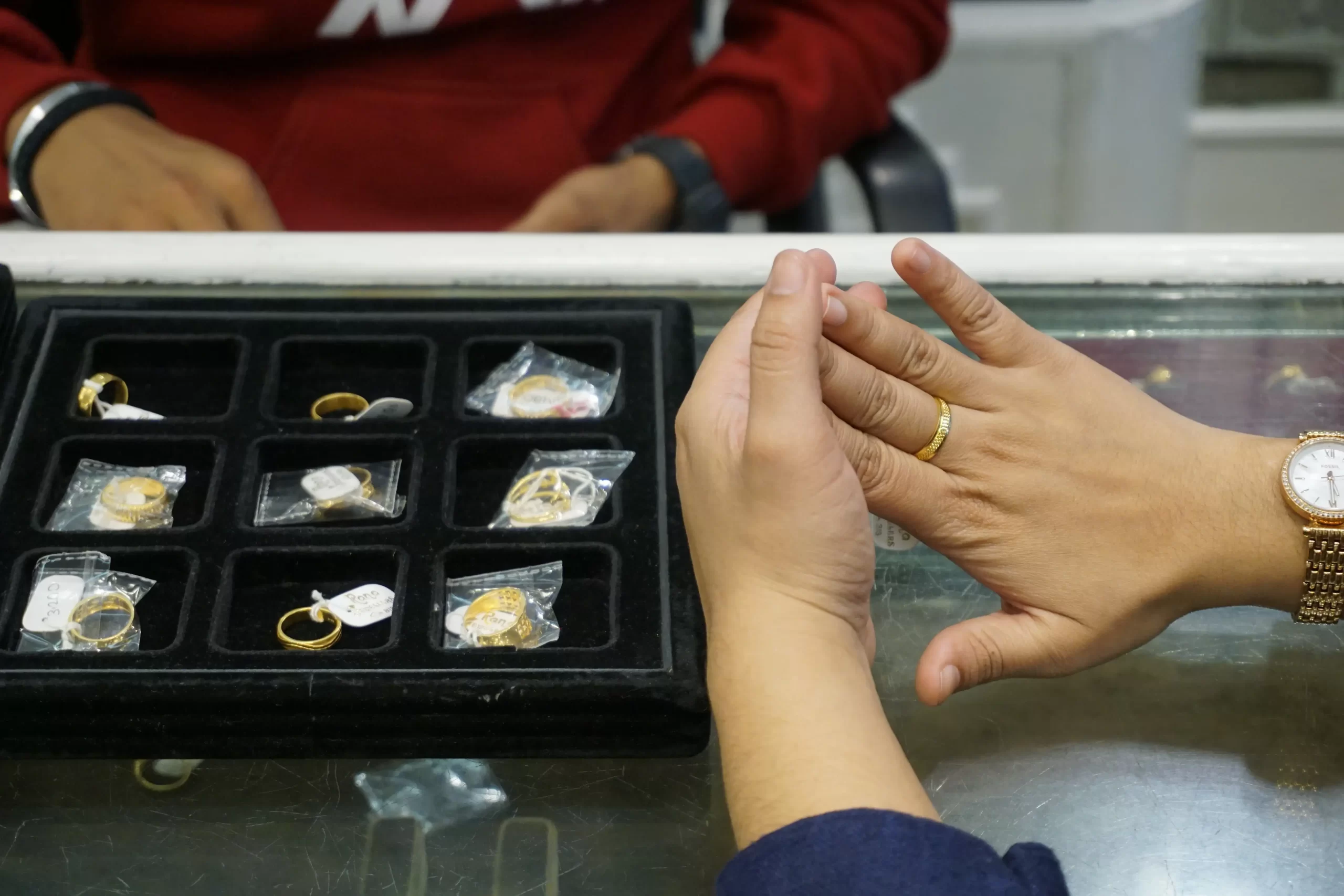Your Ultimate Guide to Common Gold Jewellery Markings
- General, Jewellery Design
Your Ultimate Guide to Common Gold Jewellery Markings
Contact us
Bengaluru
Campus 1 : JD School of Design, No. 18-1, Brigade Road, Bengaluru,Karnataka – 560 001.
Campus 2 : No. 40, Swan House, 4th Cross, Residency Road, Bengaluru, Karnataka – 560001.
Goa
Musthtifund Saunstha , Near Mahalaxmi Temple,Dada Vaidya Road, Goa-403001
Who doesn’t love a little gold bling to brighten up any outfit or occasion? In India, no auspicious occasion or celebration is complete without the exchange or adornment of gold jewellery. But not all gold is created equal. Thus, gold jewellery has markings that describe its authenticity, purity and certification by our government’s regulatory authority. These markings can give you an accurate picture of what your gold jewellery is made of and how valuable it is. But what do each of these gold jewellery markings mean?
If you’re also wondering what the various gold jewellery markings symbols mean, you’ve come to the right place. In this comprehensive guide to the various jewellery markings and meanings, we’ll explore the world of jewellery design, understand why hallmarking gold jewellery is necessary, and how jewellery markings can help you know your gold. So, take out your magnifying glass and read on!
What is Jewellery Hallmarking, and Why Do We Need It?

Gold has been the foundation for most of the world’s economies and traditions for centuries. India, the “Golden Bird” herself, has a rich history with gold jewellery spanning generations and artisans. Despite its illustrious reputation, pure gold is notoriously hard to shape and maintain since it is incredibly soft and malleable. Thus, gold is often mixed with metals such as zinc, copper, silver, and such to make it more stable and hold its shape. This process makes the gold last long but also calls into question its purity and price.
Thus, jewellery hallmarking is the practice of stamping gold jewellery with specific markings, numbers and symbols. What jewellery hallmarking denotes is the purity, authenticity and manufacturing information of each piece. This allows buyers to make informed decisions about their jewellery and removes the possibility of scams from markets.
How to Identify Gold Jewellery Markings? : The Ultimate Jewellery Hallmarks Guide

Types of Hallmarks for Gold Jewellery
The hallmark of gold jewellery includes a combination of symbols, numbers and markings to denote various attributes such as purity, authenticity and value. These can vary slightly based on country of origin but are largely standardised. The following gold hallmark types would be seen on most pieces of jewellery:
- Karatage: The purity of gold is measured in karats and denoted as ‘K’, ‘Kt’ or ‘ct’. This purity is divided into various categories (18K, 22K, 24K), with 24K being 99.9% pure gold.
- Millesimal Fineness: This gold jewellery number marks the purity of gold in terms of parts per thousand, essentially translating karat values into more tangible values. Fineness values are typically 3-digit numbers; For example, an 18K gold bangle would have a fineness value of 750, meaning that it contains 75% pure gold, and the remaining percentage is mixed metals.
- Makers’ Mark: In some countries, gold jewellery has a maker’s mark stamped on as symbols to denote the manufacturer, sometimes even mentioning the manufacture date.
- Assay Office Mark: In most countries, the hallmark indicates that the jewellery has been tested and certified by the assay office.
These hallmarks are denoted on gold jewellery as engravings on the inside of the jewellery, with a symbol of certifying authority (assay office mark, BIS mark and such), followed by karat value, fineness value, and finally, manufacturing information. This can look like ‘(Certification Symbol) 22K916 AAAAA’.
How to Identify Hallmark Gold Jewellery in India?
One of the largest markets for gold in the world happens to be India, and there needs to be an overseeing authority to regulate gold trade. The Bureau of Indian Standards, or BIS, is the regulatory authority for gold production in India and is responsible for standardising the hallmarking process. As of July 2021, the Indian government has made BIS hallmarking of gold jewellery mandatory for all gold jewellers to ascertain the purity of the gold.
If you’re wondering which marking on gold jewellery to look for, the Department of Consumer Affairs has listed the various markings BIS Hallmarks need to include. These are the BIS Standard Mark, the Purity-Fineness Grade and a six-digit alpha-numeric code containing each piece’s unique information.

BIS Standard Mark
All gold jewellery in India must be embossed with the Bureau of Indian Standards logo to certify that it has been checked by the BIS to confirm its authenticity and purity. This logo is triangular in shape with a dot in the middle and appears as the first marking on a gold hallmark.
Purity-Fineness Grade
This hallmark appears second after the BIS mark and is meant to describe the grade of purity (measured in karats) and fineness (measured in a 3-digit code). This hallmark thus appears as an embossed combination of letters and numbers to denote the purity of gold. For example, if an article of gold has the hallmark ‘18K750,’ it means that the jewellery is 18 karats of gold and contains 750 parts per thousand or 75% of gold.
HUID Number
The final hallmark for gold jewellery in India is a 6-digit alpha-numeric code known as the Hallmark Unique Identification Number or HUID. This code is a unique identifying number for each article of jewellery and can be verified through the BIS Care App.
The BIS Hallmark for gold jewellery sold in India would thus look like ‘BIS Symbol, Karat Value, Fineness Value, HUID Code’. This hallmark protects sellers and customers alike, by maintaining a purity and quality standard for all gold sold in India.
Conclusion
Jewellery hallmarking is an essential and ethical practice to maintain the sanctity of gold trade within and across nations. Simple jewellery markings and symbols can ensure that customers are making informed decisions about their purchases and buying exactly what they asked for. Understanding the gold hallmarking process is essential for any jewellery seller and designer.
If you want to learn more about jewellery design and how to create intricate and exquisite jewellery while maintaining industry standards, consider applying to JD School of Design’s prestigious Bachelor’s Degree in Jewellery Design. Designed with innovation and sustainability in mind, this course allows you to study the principles of jewellery design from industry experts. Start your jewellery design journey today!
